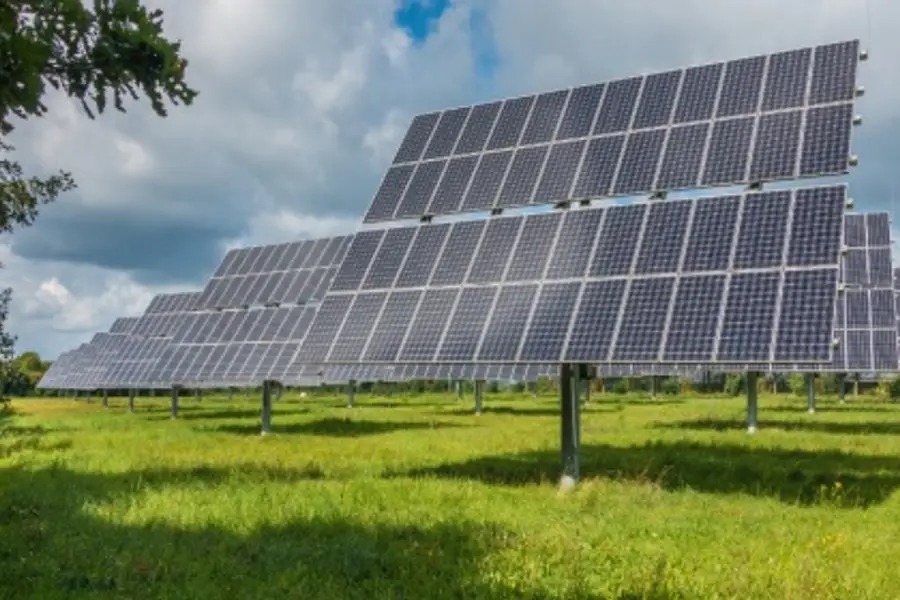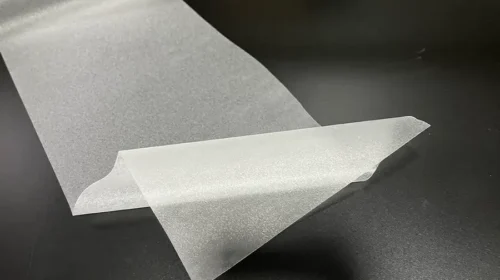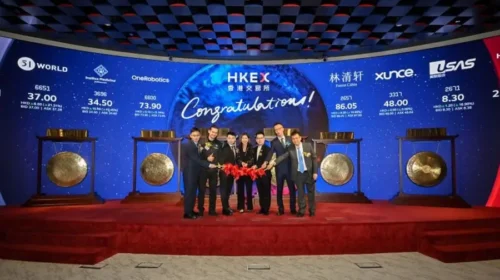Daqo looks to new government campaign to revive slumping solar sector

The leading polysilicon maker said its prices continued to fall to well below production costs in the second quarter as it produced at just a third of capacity
Key Takeaways:
- Daqo’s revenue tumbled 66% in the second quarter and its polysilicon production fell by a similar 60%, as it produced at just 34% of capacity
- The company and its peers hope a new government campaign to promote “high quality development” will help to curb cutthroat competition in the solar sector
By Doug Young
A flurry of government initiatives dating from the end of June, aimed at ending cutthroat competition in China’s solar sector, is bringing hopes for a recovery in the not-too-distant future. Never mind that prices continue to fall, despite a brief pickup in July shortly after announcement of the new government campaign.
Those were the key messages in the latest financial report this week from Daqo New Energy Corp. (DQ.US; 688303.SH), one of China’s leading makers of polysilicon, a key ingredient used to make solar cells. The report showed that Daqo continued to operate at just a third of its capacity during the quarter, reflecting a massive glut across its industry. Such low utilization is actually helping the company stem its losses, since Daqo’s average production cost of $7.26 per kilogram of polysilicon during the quarter was 42% above its average selling price of $4.19, meaning the company lost $3.07 for every kilogram of polysilicon it sold.
Daqo broke with tradition and led off its latest quarterly report by telling investors it had about $2 billion worth of cash and other financial resources available, including short-term investments, fixed-term deposits and bank notes receivables at the end of June. While that was down from $2.5 billion a year earlier, it seems to show the company still has plenty of resources to help it manage losses that analysts expect to continue through at least next year.
The net result of all that news was a 2.9% decline in Daqo’s New York-listed shares on Wednesday after the latest report’s publication. While that doesn’t look great, the selloff probably could have been worse without all the reassurance about new government initiatives aimed at supporting the beleaguered industry. And we should note that the stock is up 55% over the last 52 weeks, though it still trades near five-year lows.
China’s solar industry, consisting mostly of solar cell, solar panel and polysilicon makers, spent much of the last three years building up massive new capacity as prices soared as recently as 2022 on big demand for new green energy installations. Daqo was typical of the industry, building new capacity that raised its annual total to about 300,000 MT tons by the end of last year, roughly triple its capacity at the end of 2022.
But such a rapid buildup, together with a slowdown in new solar farm construction worldwide, led to a huge glut, causing prices to tumble. China was one of the industry’s bright spots in terms of new solar farm construction, thanks largely to strong government support. But after a surge of new building to qualify for state support ahead of a deadline at the end of May, new solar power installations in China plunged in June, Daqo said in its latest report. As that happened, polysilicon prices plunged by about 20% between April and June, according to Daqo CEO Xu Xiang.
“During the second quarter, the solar PV industry remained in a cyclical trough, although proactive initiatives started to emerge toward the end of the quarter,” Xu said.
Government intervention
Talk about government intervention has been circulating in China’s solar sector for much of the last year, and Daqo indicated as early as last October that Beijing was “suggesting” that polysilicon producers cap their output at half of capacity. Daqo and its peers did more than just that, based on the company’s disclosure that it was producing at 34% of capacity in the second quarter, up slightly from 33% in the first quarter.
As we’ve previously noted, Daqo and its peers have plenty of incentive to cut their output so severely purely due to market forces, since they are losing big money for each kilogram of polysilicon they produce.
The company’s latest business metrics showed weakness all around, led by a 66% drop in revenue during the quarter to just $75.2 million from $219.9 million a year earlier. To put that in perspective, the $575 million in revenue that analysts expect Daqo to earn this year is down by a whopping 88% from its peak of $4.6 billion in 2022 at the height of the industry’s boom.
The company’s polysilicon production fell 60% during the second quarter to 26,012 MT from 64,961 MT a year earlier. Even so, Daqo only managed to sell 18,126 MT during the latest quarter, meaning about 30% of its output went unsold. It forecast it would produce between 27,000 and 30,000 MT in the third quarter, which looks slightly encouraging since that range is higher than actual production in the second quarter.
As it curbed production to stem its losses, Daqo pared its net loss to $76.5 million in the second quarter from $119.8 million a year earlier.
That brings us to the basis for Daqo’s slight optimism that its industry could soon stabilize, which owes completely to the latest new attempts at government support despite all the market factors working against the sector. The company said the latest government campaign dates back to a June 29 article in the People’s Daily, the official newspaper of the Communist Party, calling for “measures to curb vicious competition and promote high-quality development.”
Two days later, President Xi Jinping personally emphasized “the need to regulate disorderly low-price competition and phase out outdated capacity.” That was followed by a government-led meeting with 14 top solar companies on July 2 to talk about the need for “high-quality growth.” And in the latest step, the government on July 24 issued a draft amendment to a price law that clarified criteria for “identifying unfair pricing behavior” and strengthened “legal accountability for price-related violations.”
Daqo noted that spot polysilicon prices rebounded in July amid the flurry of initiatives, though it didn’t comment on whether those gains were sustained in August. We suspect the rally was short-lived and are mostly skeptical that this latest government initiative will have much effect. At the end of the day, the market is far more likely to ultimately dictate how and when the industry will finally emerge from its ongoing slump.
To subscribe to Bamboo Works weekly free newsletter, click here





